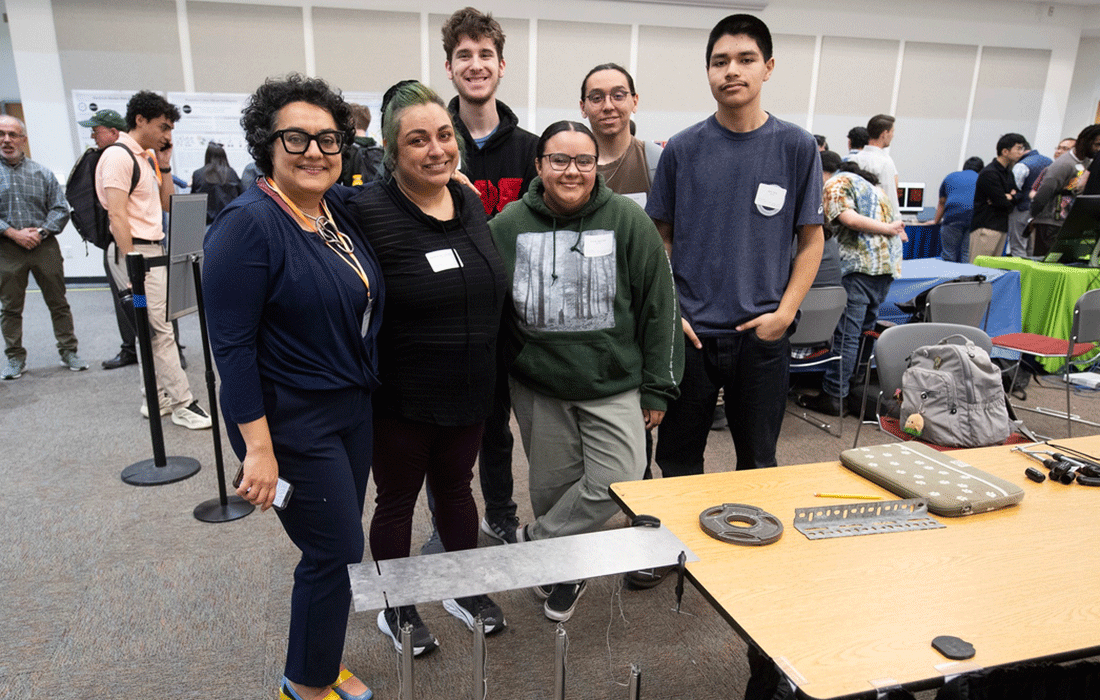Digital Technology Helps Aerospace Engineering Students Predict Future Happenings

Imagine a type of technology that can predict the structural health of an aircraft in real time, helping improve safety.
The Digital Twin Technology for Aerospace Engineering (DiTTA) is CPP's attempt at creating a technology demonstrator for this goal. A Digital Twin can detect possible structural defects in an aircraft or any damage it might have incurred during flight.
DiTTA had its start three years ago when Aerospace Engineering Professor Zahra Sotoudeh started her research on machine learning for the department and responded to the Digital Twin technology need that has been voiced by the US Air Force for a few years.
“A digital twin can decrease maintenance costs by acting as a live health monitoring system and help engineers and operators make better decisions based on running what-if analysis on the digital twin,” Sotoudeh said.
This technology is a form of predictive engineering. Sensor data are gathered, and simulations are done in real-time to predict an aircraft's structural health. Sotoudeh and her CPP students published their initial results as “A Digital Twin Framework for Detecting the Damage Location” at the AIAA SciTech Conference in Florida in January.
The team showcased their work there and at the ASME SSDM Conference in Seattle April 29-May 1 and Cal Poly Pomona’s AI fair in April.
“It’s great to see all the work other individuals have done,” said Michael Quach, functional data analyst for the project. “When you publish a paper at a specific conference, you are interested in what others have done. You connect and get your hands dirty in a new field.”
DiTTA has been a gateway to connections for the team, notably with Ansys Software, a global leader in digital engineering solutions and multiphysics simulation software. The team is conducting experimental tests with fiber optics and sending results to the Ansys team in Texas for verification.
Aerospace engineering students Enixe Aguilar, Krishi Gajjar, Joshua Medina, Angel Juarez and electrical engineering student Ethan Rosell had the opportunity to work with NASA and learn about fiber optic technology from the agency that made it a leading technology.
Ultimately, the team plans to develop a digital twin for a flying unmanned aerial vehicle (UAV).
Sotoudeh describes this project as the embodiment of learning by doing with a very strong experimental and numerical component to it. Although a background in programming is encouraged, if you are a student with a passion for numerical method, experimental reach, and developing new technologies, you are welcome to join.
“You need to get the whole campus experience,” said Jeremy Major, a newer member of the team. “You are at one of the best engineering colleges in the country. Get on a project and get yourself out there. Fill out your resume. Even if structural analysis is not something you want to do, you get to use a bunch of different software you will be using in the future.”
For more information on DiTTA, contact Professor Zahra Sotoudeh, at zsotoudeh@cpp.edu.

